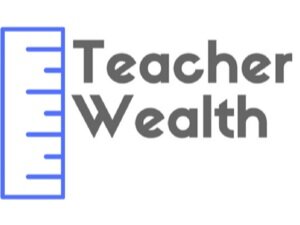Types of Student Loans - An Overview
Student loans can be confusing. Whether you are looking into getting loans for the first time or trying to identify the type of loans you already have, I hope this guide will be helpful to you. There are two types of student loans: federal (public) loans and private loans.
Federal Student Loans
A student must complete the Free Application for Federal Student Aid (FAFSA) form to determine eligibility for the following loan programs. This application will also determine potential eligibility for grants and work-study programs. In addition, many schools use this to help them determine who will get financial aid directly from their institution. Below are brief outlines of the different types of federal student loans:
Direct Subsidized (Stafford) Loans
Must show financial need.
For undergraduate degrees.
The government will pay (subsidize) the interest while still in school.
U.S. Department of Education is the lender.
Maximum amounts:
$5,500 for 1st year undergraduate (up to $3,500 can be unsubsidized).
$6,500 for 2nd year undergraduate (up to $4,500 can be unsubsidized).
$7,500 for 3rd year undergraduate and after (up to $5,500 can be unsubsidized).
Maximum Aggregate limits:
$31,000 (up to $23,000 can be unsubsidized).
Interest rates are set by Congress. See HERE for current and past rates.
Direct Unsubsidized (Stafford) Loans
No financial need necessary (i.e. Bill Gates’ children would be eligible).
For undergraduate, graduate, or professional degrees.
Interest will accrue while still in school. Student likely does not have to pay interest while in school, although they can choose to do so.
U.S. Department of Education is the lender.
Maximum amount (see above, as explained with subsidized loans).
Interest rates are set by Congress. See HERE for current and past rates.
Direct (Parent) PLUS Loans
For parents of dependent children.
Also for graduate, or professional degree students.
No financial need necessary.
The borrower must NOT have adverse credit.
U.S. Department of Education is the lender.
The maximum amount is the cost of attendance (minus any other financial aid received).
Interest rates are set by Congress. See HERE for current and past rates.
Perkins Loan Program
Must show financial need.
For undergraduate, graduate, or professional degrees.
School is the lender. Schools have limited funds to distribute. Also, not all schools participate in this program.
Maximum Amounts:
$5,500 per year for undergraduate degrees.
$8,000 per year for graduate or professional degrees.
Maximum Aggregate amounts:
$27,500 for undergraduate degree.
$60,000 for graduate degree (includes the amount as an undergraduate).
Interest rates are set by Congress. See HERE for current and past rates.
Private Student Loans
These loans are made directly from a lender, such as a bank, credit union, state agency, or school. Typically private loans are used when a student doesn’t have enough to pay for their schooling after considering the federal loan programs for which they are eligible.
These loans can vary greatly from each institution but generally, they have the following characteristics:
May require payment while still in school.
The borrower may need a cosigner.
Can have variable interest rates.
May require a credit check which can determine interest rates and terms.
May not offer forbearance and/or deferment during financial hardship like federal loans.
Can often borrow up to the cost of attendance, if approved.
Generally, federal (public) student loans are better than private student loans, for all kinds of reasons. So it is usually wise to exhaust federal loan options before getting private debt.
If you would like help making good decisions of how to pay for college or the best way to pay back student loans please let us know. Additionally to get access to a free college money report that shows you how much colleges think you can afford and how much they expect your to pay out-of-pocket, click HERE.
